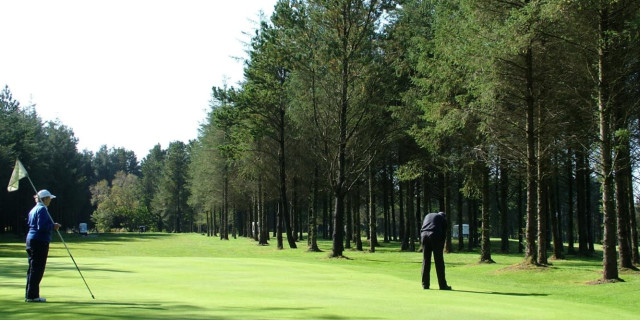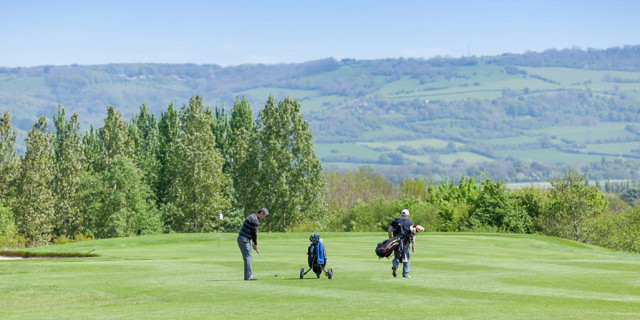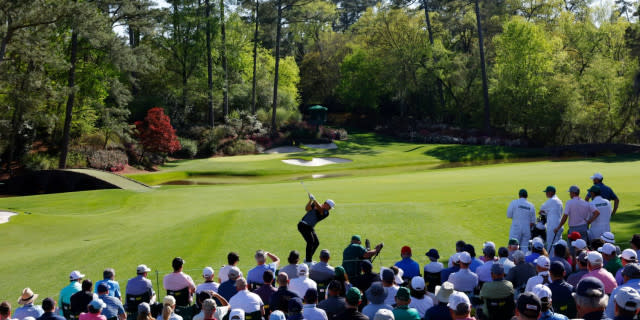
Slow Play - How to Keep Things Moving on the Golf Course
NOTHING causes more debate among club golfers than the subject of slow play. NOTHING! Whether it be tour professionals taking upwards of five hours to play 18 holes or fourballs at golf clubs being blamed for taking an eternity and bringing the course to a grinding halt, it is an issue that simply refuses to go away - and it is something you keep coming back to in our surveys.
What makes matters all the worse is that when the game returned after lockdown, the measures taken to ensure the game was safe to play also just happened to encourage us all to play quicker.
We had to turn up in the car park ready to play at the allotted time. Initially we were restricted to playing in two-balls and there were greater intervals between games. There was also little or no social interaction. We just went out there and played - and most of us found that we could negotiate our home courses in around three hours - and often even faster. Everybody was happy. Well, almost everybody was happy - this is golf, after all, and there will always be those who are never happy. And some golfers felt they were being rushed.
Featured Content
When we finished playing, we climbed into our cars and headed straight home. We had no choice - the clubhouses were closed, as were the local pubs and hotels. So having a couple of beers wasn’t an option for us.
But there is now growing unrest once again. With reduced daylight hours there is increased pressure on tee times as more golfers try to play but find it increasingly difficult to do so. With the clocks about to go back, it will soon be dark by 4pm, which means that 1pm is going to be the latest time anybody hoping to complete a three-hour round can start. And as the winter sets in, the prospect of starting at 7am becomes increasingly unattractive.
It hasn’t helped that many courses have now relaxed the restrictions relating to gaps between tee-times. They will tell us that they have had to do so in order to cope with the increased demand as golf clubs find themselves full to bursting point for the first time in years. Many stalwarts will be praying that those who flooded back to the game during the summer will be heading in the opposite direction now that we are faced with cold, wet days.
What Golfers Think

In our recent survey it quickly became obvious that many of you continue to be turned off by slow play, and the danger is that some of you feel so strongly about it that you may even stop playing.
Here are just a couple of examples of what was happening after the restart and what is occurring now:
"My club made the first three times of the day until this week nine holes only then there were tee-times every 10 minutes. They have taken away those first three slots, due to the later sunrise, and all tee times are now 12 minutes apart. We are still only allowing visitors with members only, and no societies.”
Many of you believe that clubs should be doing more to encourage nine-hole golf, especially if we are to attract youngsters to the sport.
“Post-lockdown, one club introduced the following system; twoballs until 07:30, threeballs until midday and fourballs after midday. However, with the relaxation of the rules and to ensure everyone can play they now have threeballs until 07:30 then fourballs after that."
This sounds like a sensible option, and one that should ensure things keep moving along at a decent pace. When all is said and done, there is not much that can be done to cram more people onto a course when we have reduced daylight hours.
But for some of you, the feeling is that things remain as bad as ever.
"Play is far too slow again. It took nearly two-and-a-half hours to play eight holes due to a four-ball of very inexperienced players not letting quicker players through. Also they were removing the pin on every hole, which is forbidden in these times and they were two holes behind the group in front of them. My partner and myself gave up after the eighth hole. I am very disappointed with the club’s attitude towards the slow play group, saying everyone has to start somewhere. I get that, but they should be told to let other quicker groups through."
This touches upon a number of issues. Increasing numbers of you seem to want a reduction in four-ball golf, but the truth is that, for huge numbers of club golfers, playing in four-balls is their favourite format - and that is highly unlikely to change.
On the question of new and inexperienced players, clubs need to take ownership. Of course we want to see more men, women and children playing the game, but if they are new to the game the whole issue of etiquette needs to be explained to them, and that includes encouraging them to wave through quicker players, to be aware of what is happening behind them, to pick the ball up if they are out of the hole or are stuck in the hay. In short, they need to know the rules and to realise that their behaviour affects others.
There are those who would advocate access to tee-times based on handicap levels. The problem with this is that golf is primarily a social game and you will often find that a low-handicap player will choose to play with a friend whose handicap might be far higher. And the very reason they choose to play together is because they enjoy one another’s company. If you start to introduce tee-times based on ability you will simply alienate even more club golfers.
Some courses have notices at various holes to tell golfers how long it should have taken them to reach a specific point but these are a waste of time because those who play the course on a regular basis simply stop seeing them. Some courses employ marshals whose job it is to patrol the course and give players a gentle ‘hurry-up’ but for many that is just not a viable option from a financial point of view.
How to Keep Things Moving

There are lots of things we can all do to keep things moving. Make sure you get to the course with plenty of time in hand before your tee-time, try to hit some shots on the practice ground before you set off and get to the first tee at least five minutes before you are due to start.
Be ready to play - it is now acceptable to hit your shot if you get to your ball before anybody else in your group. Keep your pre-shot routine to a minimum - or go through your routine while your partners are playing their approach shots. If you hit a ball into thick rough, hit a provisional. When you get to the green, don’t leave your bag/trolley at the front of the putting surface - leave it on the tee-side, ready to move to the next hole. And wait until you get to the tee before updating your scorecard. There is nothing more frustrating than watching four golfers putting out, standing on the green while marking their cards and then watching them heading in all directions to collect their clubs before finally clearing the green.
Greenkeepers also have a part to play. If flags are positioned in difficult places on greens it is going to slow things up. By and large, club golfers do not employ a strategic approach and fire at every pin - and if those pins are hidden behind deep bunkers it stands to reason that many of them will spend half their rounds trying to extricate themselves from the sand.
Poor course signage is another issue that needs to be addressed, whether it’s a lack of ’Next tee’ signs or call-up holes not being flagged up properly - or at all. If holes aren’t clearly marked, visitors don’t know where to leave their bags before putting because they are not sure where to go afterwards. And if there is a blind hole that has a bell, put a sign on the tee reminding everybody to ring that bell when they have played their second shots.
Can technology help to speed things up?
TagMarshal is a system that uses data-transmitting tags that can either be clipped to golfers’ bags or to buggies. They measure player movements and can be monitored from either the pro’s shop or by a marshal. Greeni is a similar system - it requires one member of a group to download an app. Once again, pace of play is monitored from a central point. Carttrac is a GPS system installed on buggies - the golfer sees state-of-the-art hole graphics, while the club can monitor pace of play.
These are all well and good, but they are subscription models and at a time when clubs are struggling to make ends meet, most will shy away from employing such systems - all the more so because members and visitors might well feel that it all smacks of ‘Big Brother’. And will clubs have the courage to approach players during or after a round and tell them they are too slow?
To sum up, there are lots of things we can do to speed up the game. The reality is that, with the best will in the world, it is unlikely that anything is going to change anytime soon. Keep your thoughts coming - we’d love to hear how YOU believe we can rid our sport of five-hour rounds.
Related Content
Tags: slow play Ready Golf Pace of Play industry insider daily picks









